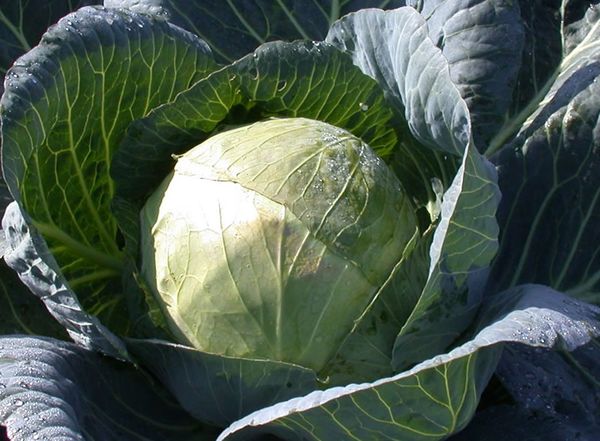The variety of cabbage “Belorusskaya” has a long history, and it is gaining more and more lovers. For more than seventy years, gardeners and large agrarian enterprises have relied specifically on this variety. According to the description of the variety has a large number of advantages.
Table of contents
Description and characteristic of cabbage of a grade Belarus
In 1937, the breeding institute developed a variety of white cabbage, which is resistant to frosts and many diseases. He quickly entered the list of varieties recognized by agriculture.
"Belarusian" is distinguished by the fact that the ripening period is quite suitable for cold regions. During the set of mass, the strength of the head of cabbage, low temperatures have a beneficial effect on quality.
According to the description, this is a late variety with a period of aging. from 110 to 130 days. Planting of this variety can begin even in June, since it is preferable to organize the harvest in late September - early October.
Heads of rounded, slightly flattened, strong and dense. In full maturing reach 3 - 4 kg. They do not crack, they easily endure a short drought, if they did not suffer drought in the first two weeks after planting in the ground. Easy to transport.
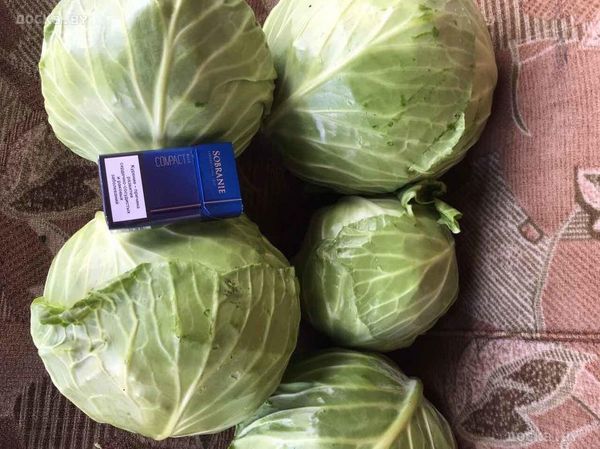
Advantages and disadvantages
Of the advantages are the main features due to which this variety is chosen by gardeners:
- Excellent keeping quality over 3 months;
- High taste in any form;
- The density of the head and a small stalk;
- High content of vitamin C;
- Excellent quality when fermented;
- Productivity
With proper care in the first three weeks, productivity and resistance to diseases considerably increases.
There are disadvantages that significantly reduce the desire of newbies to use this variety annually:
- Unlike hybrids, prone to keel;
- Prone to vascular bacteriosis;
- Attracts pests, though, it is an indicator of the quality of the cabbage;
- Picky in the first month of watering, and transplanting.
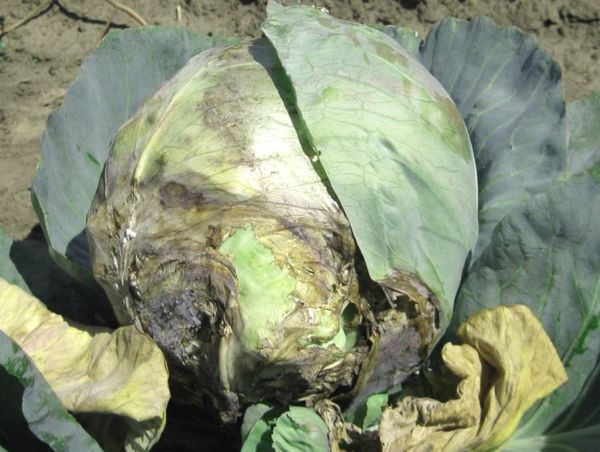
Growing seedlings
There is no need to rush to plant seeds before the due time. The optimal time is mid-mayif you plan to use it for pickling or storage.
If this variety is used for harvesting, a part can be sown in early May, and in September you can safely use the crop for conservation.
Seedlings for seedlings do not require special preparation and soaking. The main thing - to prevent the drying of the soil. The seeds sprout on 4–7 days together enough, and quickly reach for the light, so make sure that the seedlings are on a lighted window, or in a greenhouse.
For sowing seeds, choose turf soil, do not add black soil. The presence of loam in the soil is useful for seedlings.
After planting the seeds, spill the soil with warm water, cover with foil, and leave it until the first shoots.
Growth conditions
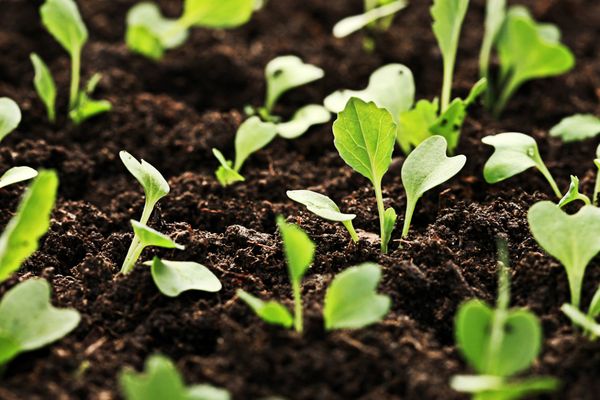
Seedlings, for full development should more time to be in the sun, the soil should not dry out. If this is possible, on warm days, take it out to the street, or to the greenhouse. At night, be sure to bring into the house, as the temperature is optimal for healthy growth - from 18 degrees above zero, and in May quite cold nights.
To plant seedlings in the ground need to be later than one month of age, and ideally at the age of one and a half months. The stalk should be short and dense, thicker than a pencil.
Choose loamy soil, and a place on the site, which is illuminated by the sun in the morning. This is important for cabbage. She will perfectly survive the absence of the day and evening sun, but without the morning sun she will be ill.
Despite the fact that it is a moisture-loving plant, do not break the beds in the valley, and moreover, the beds should be made higher - groundwater is detrimental to the roots.
Growing soil
Form a bed from north to south, and then the shoots will get enough sunlight. If possible, sow mustard in early spring and dig up the soil before planting with mustard seedlings.
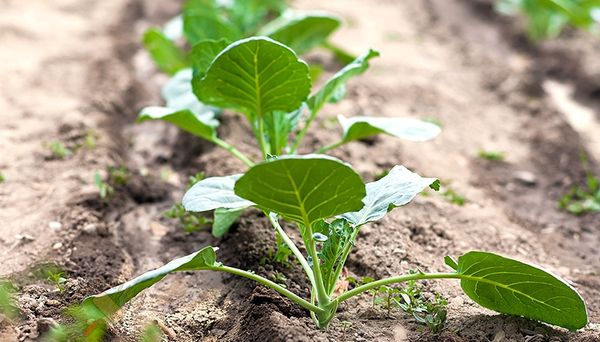
Put a handful of chernozem (last year's manure), a tablespoon of wood ash into each well. Do not overdo it with fertilizers, cabbage did not like excessively oily soil, so it will not curl for a long time.
Planting seedlings in the ground
At the age of 35 - 50 days, seedlings need to be planted in the ground. To do this, choose a cool day, and best of all rainy days, during which the seedlings will easily survive the transplant and recover.
Make holes with distance 50 to 50 cm. spill each well with two liters of water, put the humus and ash.
Put one root in each well, put the ground on top of the root and press lightly.Do not sprinkle a lot of ground, the first leaves that remain on the stem should stay on top of the ground.
Water a little water again. If the weather is sunny, you need to priten seedlings for the first 3 - 4 days. After the cabbage leaves stand, the barriers and shelters need to be removed.
Departure after landing
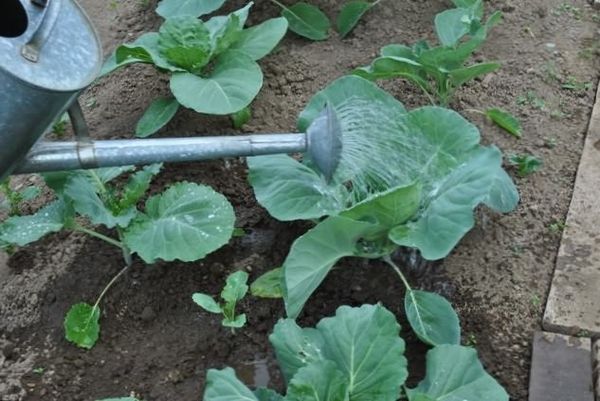
After planting, watering is necessary. everyday. In the evening, after the sun is closer to sunset, it is necessary to pour more than a liter of water under each root.
During the first week there is no need to loosen the root zone, and a week later, before watering, you need to loosen.
Two weeks after planting, stop daily watering. It is necessary to let the sprouts dry completely and let them stand completely dry for a couple of days.
Need to monitor the occurrence of midges and caterpillars. At the first appearance of the midges it is necessary to sprinkle the cabbage with soapy water, and sprinkle with wood ash on top.
Dissolve the soap in a bucket of warm water so that the water becomes white and soapy.Spray this solution on the leaves, especially the middle, the connection of the leaves with the cutting, and the earth around.
When the tracks appear, it is necessary to use special treatment agents. Processing to produce in calm weather, it is better in the evening, after the sun is closer to sunset.
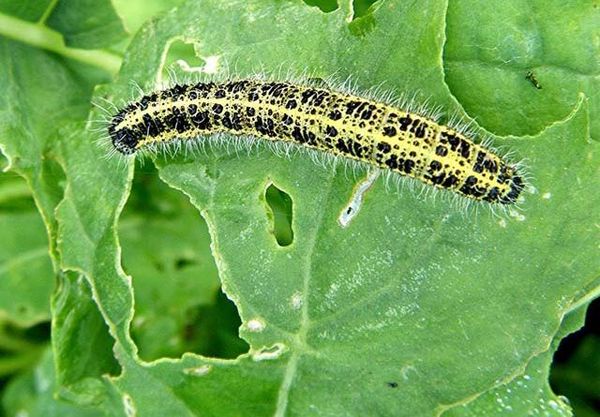
Diseases and their prevention
This variety is more prone to the disease, than hybrid varieties. Therefore, it is worth making a spring planting on a new land, not planting seedlings where the cabbage was last year. If you find a root with a keel, do not throw it in the compost, but burn it, or take it out with garbage.
With vascular bacteriosis, yield and taste are greatly reduced. Another name for the disease is Black Rot. It manifests itself primarily in the darkening of the veins.
Wet rot appears after vascular bacteriosis, head out, even cut, and laid for storage quickly rot.
For the prevention of bacteriosis, it is necessary to observe crop rotation, remove weeds in time, monitor the appearance of pests that spread the disease. Damaged plants must be removed from the bed and destroyed.
Harvesting and storage
In late September - early October, the grade completely ripens.
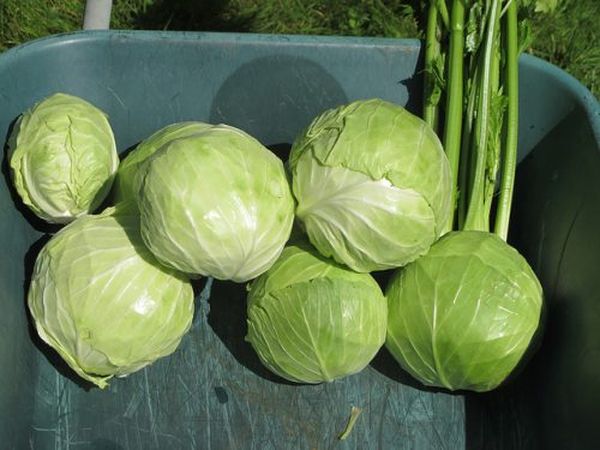
When harvesting it is not necessary to leave long stalks on the heads. Enough 3 cmif the cabbages will be kept whole. To do this, select the whole, even heads up to 3 kg., hang in the storehouse for the stump, and make sure that they do not sprout or get wet.
The variety has both connoisseurs, who annually select it for the main one, and opponents. Having considered all the pros and cons, you will definitely make the right decision for your garden. If we consider that there are quite a few non-hybrid varieties left, and they become weaker, the variety behaves well even in harsh conditions, and gives an excellent harvest.
